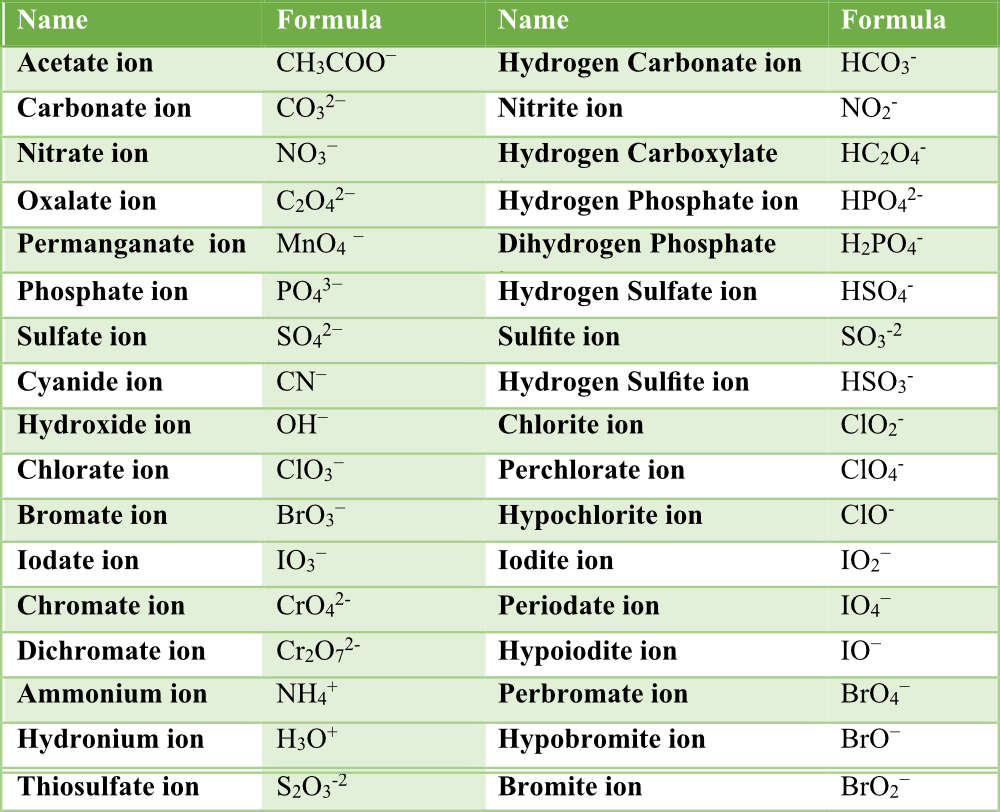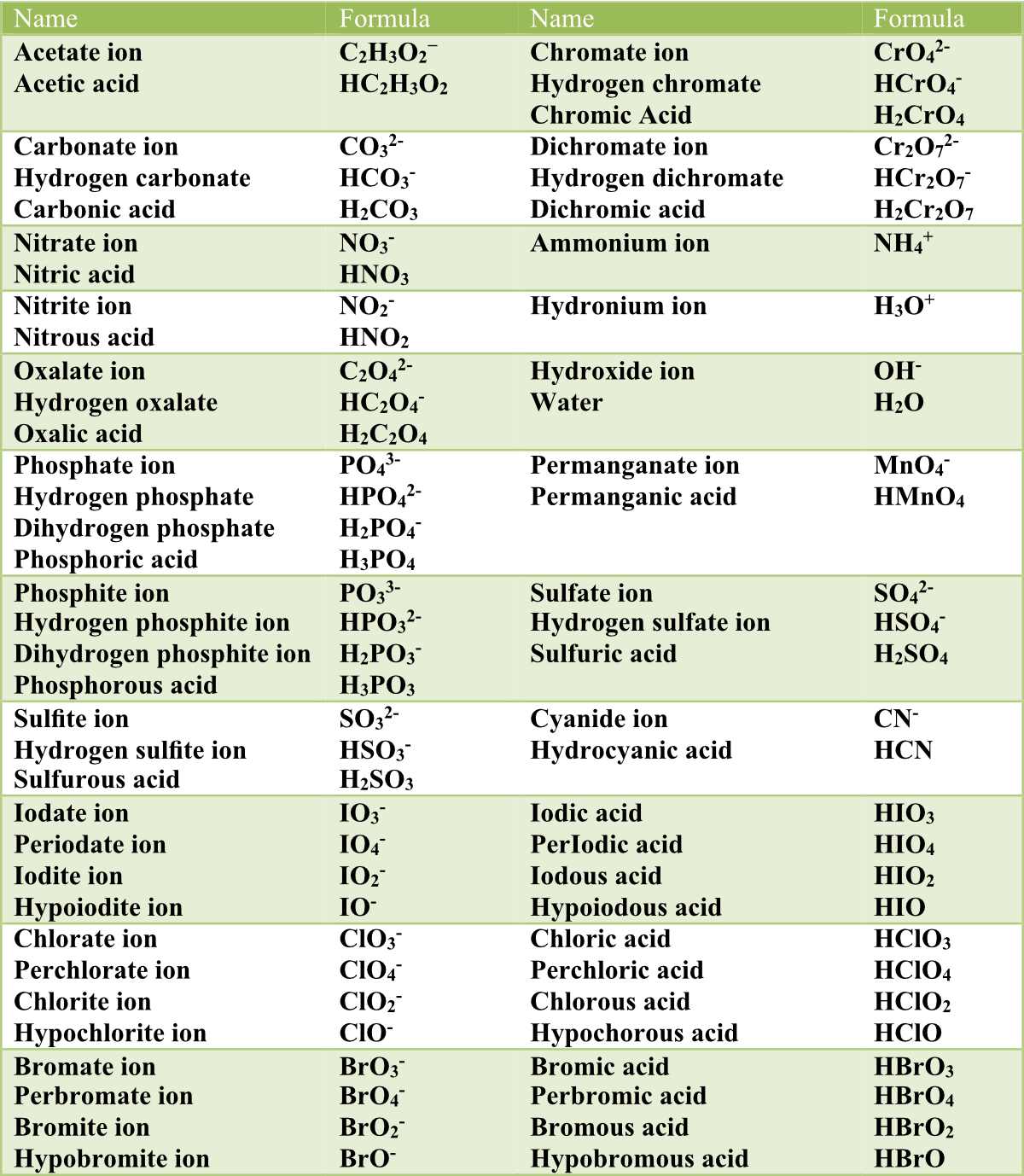In this study guide we will learn how to name acids and bases. First we will start with acids. The table below lists some common polyatomic ions. It is assumed you have already memorized the names, formulas, and charges of the polyatomic ions.
Oxoacids are acids that contain oxygen atoms. The oxygen is bonded to a central atom and hydrogen is bonded to oxygen. Note, most of the polyatomic ions in the table are negatively charged with the exception of NH4+ and H3O+. Once you have memorized these ions, you will be able to name many different compounds including acids and bases. Here you will learn how to derive the names for oxoacids. For example, NO3– is nitrate ion. If we add a hydrogen ion, a proton, to the nitrate ion, we get nitric acid.
Notice when we add the hydrogen ion, the charge of the species increases by one and the compound is neutral. Because we added the hydrogen ion to the nitrate ion, acid suffix is “ic”–nitric acid. In the case of nitrite ion, NO2–, adding a proton results in nitrous acid. When adding a proton to an ion with a suffix of ate, the acid suffix becomes “ic”, and when adding a proton to an ion whose name ends in ite to form a neutral acid, the acid suffix becomes “ous”.
Below is a table of polyatomic ions and oxoacids. Please make sure you get to know these as you will see them again and again.
As for binary acids such as HCN, we use the prefix hydro and change the suffix of the ion to ic. HCN would be named hydrocyanic acid. HCl would be called hydrochloric acid, HI would be named hydroiodic acid, and H2S would be named hydrosulfuric acid.
Exercises
Exercise 1. Name the following acids.
1. H2SO3
2. H2Te
3. H2CrO4
4. HClO2
5. CH3COOH
Exercise 2. Write chemical formulas for the following acids.
1. perbromic acid
2. hydrosulfuric acid
3. hydroiodic acid
4. chlorous acid
5. periodic acid
View Solutions to Exercises
Back to Study Guides for General Chemistry 1
Back to Home Page


